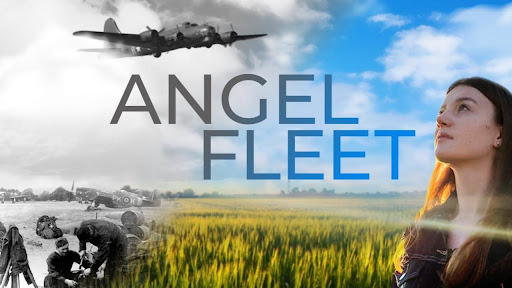
Angel Fleet, a critically acclaimed short film directed by Tristan Loraine, masterfully weaves history and human emotion, featuring iconic WWII aircraft the Boeing B-17 Flying Fortress and the North American P-51 Mustang. With its focus on the sacrifices and resilience of wartime aviators and their families, the film honours their enduring legacy while shedding light on historical events that shaped the modern world.
Set against the backdrop of rural West Sussex in England, the story follows a grieving family as they cope with the loss of their RAF test pilot patriarch. The mother channels her sorrow into organising commemorations for fallen aviators, while her daughters investigate mysterious events at a WWII airfield.
One of the centrepieces of the film, the last airworthy B-17 Flying Fortress in Europe, serves as a powerful symbol of wartime endurance. Known as a heavy bomber critical to Allied campaigns, the B-17 played a pivotal role in both the European and Pacific theatres during WWII. The aircraft also carried a tragic history through its involvement in the Fall of Singapore, one of the most significant battles of the Southeast Asian theater.
In February 1942, Singapore, a vital British military base and economic hub, fell to Japanese forces in a devastating defeat for the Allies. The surrender marked the largest in British history, altering the strategic balance in the Pacific. B-17s stationed in the region were instrumental in early reconnaissance and defence efforts, engaging in air raids against Japanese positions and enduring losses during intense combat.
Loraine's depiction of the B-17's legacy underscores the aircraft's versatility and role in one of the most pivotal moments in 20th-century history. The film's meticulous attention to authenticity highlights these multifaceted contributions, connecting audiences with the experiences of WWII aviators.
The P-51 Mustang, another star of Angel Fleet, complements the B-17's legacy with its reputation as one of WWII's most effective fighter planes. Developed for the Royal Air Force, the Mustang quickly became essential to Allied operations, particularly in escorting bombers like the B-17 on long-range missions. Its sleek design, advanced performance, and combat success made it an icon of military aviation.
In Angel Fleet, these aircraft are more than historical artefacts they are integral to the narrative's emotional and cinematic storyline. Aerial sequences, filmed with precision and authenticity in Angel Fleet, were made possible by aviation expert Guy Westgate, who coordinated complex stunts with a glider to bring the story to life. Executive Producer Herb Jackson Jr. also played a key role in supporting the project.
Through its breathtaking visuals and historical depth, Angel Fleet preserves the memory of legendary aircraft and their aviators. By combining cinematic innovation with historical storytelling, the film sets a new standard for aviation narratives in the indie film scene and cements its place as a standout contender in this year's Oscar race.


